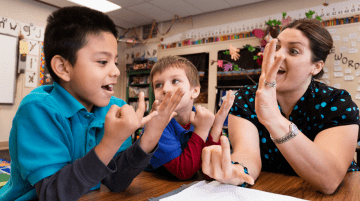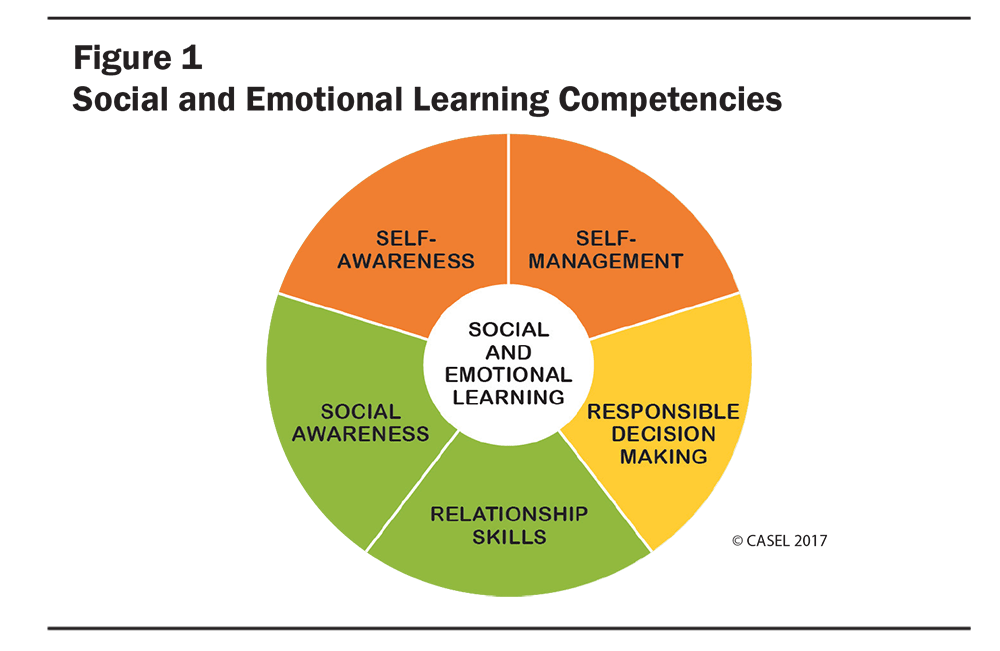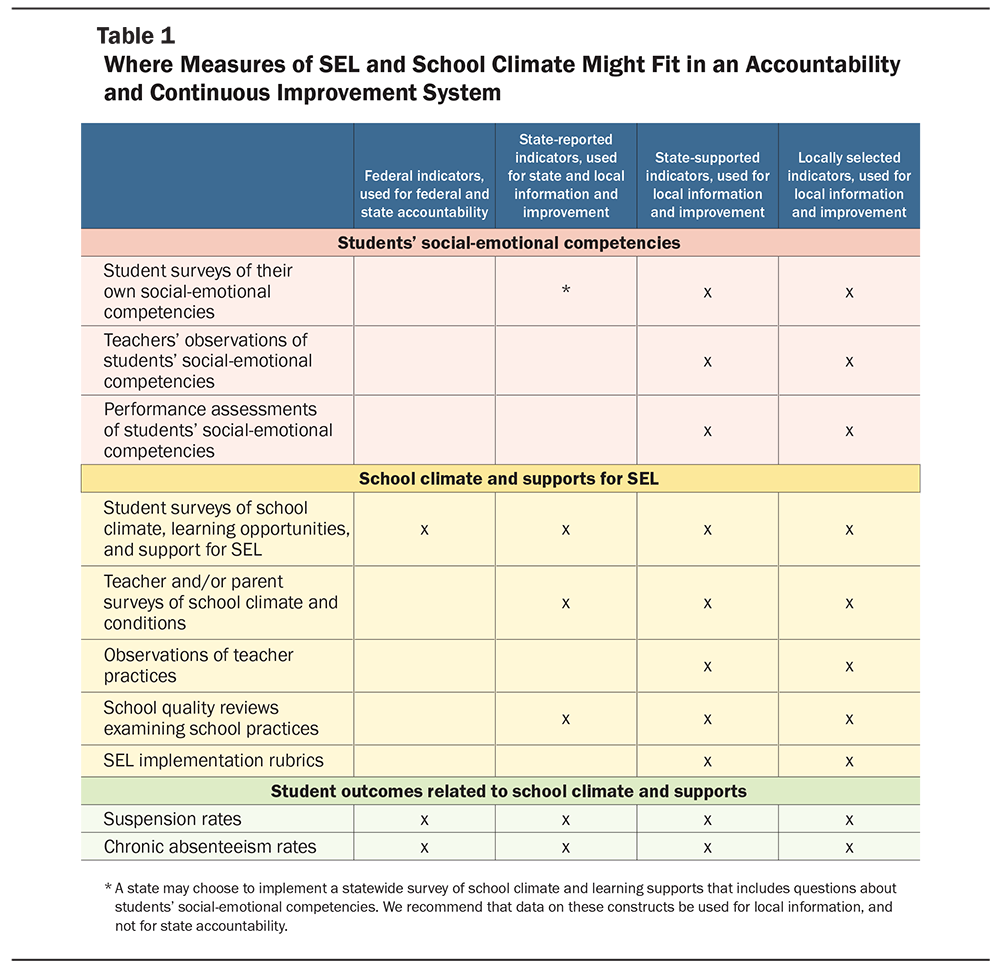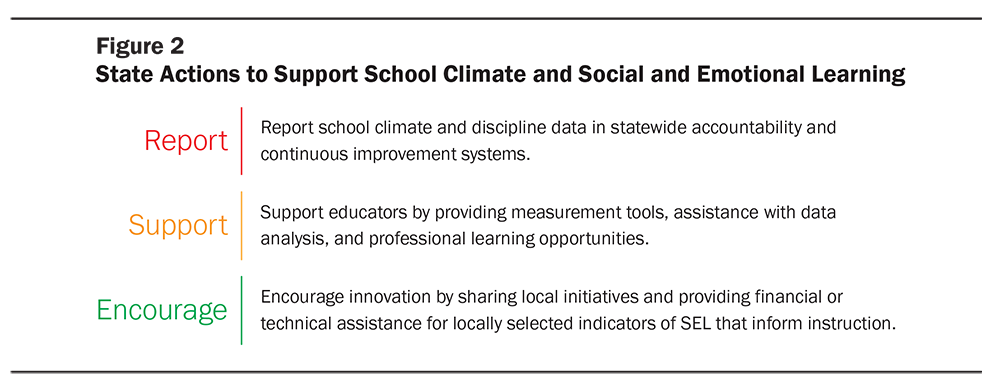Encouraging Social and Emotional Learning: Next Steps for States

Summary
This brief offers recommendations for how state agencies might measure and promote social and emotional learning in their accountability and continuous improvement plans. It is based on a more detailed report, Encouraging social and emotional learning in the context of new accountability, by Hanna Melnick, Channa Cook-Harvey, and Linda Darling-Hammond.
The Every Student Succeeds Act (ESSA), passed by Congress in 2015, provides an important opportunity for states to broaden their definition of student success. At least 16 states have formally planned to incorporate measures of school climate in their ESSA plans, with most of the remainder pledging to encourage districts to support social-emotional learning within positive learning environments. As states begin to implement their ESSA plans, it is timely for them to reflect on ways they can include measures of social, emotional, and academic development; school climate; and related outcomes in their accountability and continuous improvement systems to shine a light on how schools are developing the whole child.
Social and Emotional Learning and School Climate: The Foundation for Academic Learning
Social and emotional learning (SEL) is a broad and multifaceted concept often defined as “the process through which children and adults acquire and effectively apply the knowledge, attitudes, and skills necessary to understand and manage emotions, set and achieve positive goals, feel and show empathy for others, establish and maintain positive relationships, and make responsible decisions”Collaborative for Academic, Social, and Emotional Learning. (2018). What is SEL? (accessed 03/27/17). (see Figure 1).

Well-implemented programs designed to foster SEL are associated with positive outcomes, ranging from better test scores and higher graduation rates to improved social behavior.Osher, D., Kidron, Y., Brackett, M., Dymnicki, A., Jones, S., & Weissberg, R. P. (2016). Advancing the science and practice of social and emotional learning: Looking back and moving forward. Review of Research in Education, 40(1), 644–681; Durlak, J. A., Weissberg, R. P., Dymnicki, A. B., Taylor, R. D., & Schellinger, K. B. (2011). The impact of enhancing students’ social and emotional learning: A meta-analysis of school-based universal interventions. Child Development, 82(1), 405–432. Social-emotional competencies include skills, such as the ability to collaborate and make responsible decisions; mindsets, such as thinking positively about how to handle challenges; and habits, such as coming to class prepared.
A positive school climate includes a safe environment, strong student and staff relationships, and supports for learning. It provides the foundation that students need to develop the social, emotional, and academic competencies they need to succeed in life.Eccles, J. S., Midgley, C., Wigfield, A., Buchanan, C. M., Reuman, D., Flanagan, C., & Iver, D. M. (1993). Development during adolescence: The impact of stage-environment fit on young adolescents’ experiences in schools and in families. American Psychologist, 48(2), 90–101.
School staff can promote SEL and a positive school climate through practices such as supporting positive risk-taking and problem solving, developing an environment conducive to collaboration, and providing students with tools to recognize and talk about their feelings, as well as to resolve conflicts productively. These practices benefit from positive classroom norms developed by students with their teachers and from educative and restorative discipline practices. It is much less likely that students in a chaotic or punitive classroom will develop the social-emotional competencies they need to build strong relationships or work through tough problems.
Shining a Light on SEL and School Climate Through Assessment
How might states encourage schools to help students develop socially and emotionally, and to foster positive school environments, in the context of new accountability? There are several types of measures that can be used to assess schools’ progress in supporting the whole child, although they may not all be suitable for use in accountability systems. These include:
- Measures of students’ social-emotional skills, habits, and mindsets, which may be assessed through student self-reporting on surveys, teacher observations, or performance assessments.
- Measures of school climate and supports for SEL that assess the degree to which schools have developed structures, relationships, and learning opportunities that support students’ social-emotional development. These may be derived from student, teacher, and parent surveys, as well as from observations of classroom, school, or district practices.
- Measures of related student outcomes—including chronic absenteeism and suspension rates—that are partially a result of school climate and supports for SEL.
Some of these measures (including measures of school climate, supports for SEL, and related student outcomes) may be useful for statewide accountability, while others (such as measures of students’ social-emotional skills, habits, and mindsets) may be more appropriate as tools for local continuous improvement. Considerations include how likely the measure is to lead to meaningful improvement; how data might be distorted if attached to high-stakes consequences; the extent to which the assessment generates consistent, reliable data; and whether the measure meaningfully differentiates between schools and subgroups.
The way in which data are analyzed and acted upon of course matter greatly. CASEL has developed several resources that can support states and districts with successful implementation of initiatives. For example, CASEL’s Collaborating Districts Initiative has a rubric, developed in conjunction with the American Institutes for Research, to assess implementation of districtwide practices that support SEL. The rubric is a process indicator that monitors activities, highlights areas of growth, and sets priorities rather than assesses outcomes. An additional rubric is also available for schools.Collaborative for Academic, Social, and Emotional Learning (n.d.). District SEL planning and implementation rubric. Collaborative for Academic, Social, and Emotional Learning. (n.d.). CASEL practice rubric for schoolwide SEL implementation. Another useful resource is CASEL’s Collaborating States Initiative that works with states to support implementation of quality SEL.
Table 1 summarizes the kinds of assessments we recommend for various purposes. (For an in-depth explanation of the measures and what informed the recommendations, see the full report upon which this brief is based.)

The SEL Assessment Work Group
The Collaborative for Academic, Social, and Emotional Learning (CASEL) has organized a consortium of leading researchers and practitioners in the fields of pre-k–12 education, assessment, social and emotional learning, and related fields to help establish practical SEL assessments that are scientifically sound, feasible to use, and actionable. In this 3-year effort, members of the work group will act in partnership to make key advancements in student SEL assessment, including next-generation performance assessments. The effort is managed and staffed by CASEL in close partnership with leaders from the RAND Corporation; Harvard University; California’s CORE Districts; Transforming Education; xSEL Labs; and several universities, nonprofit organizations, and school districts across the country. Details can be found at http://measuringsel.org/.
Recommendations for States
Until recently, social and emotional learning has often been seen as a distraction from academics and placed on the sidelines. Research suggests, however, that SEL and a positive school climate are the foundation for students’ academic and later life success. States should encourage schools to support SEL in the context of new opportunities for accountability and continuous improvement under ESSA (see Figure 2).

After reviewing each type of measure in depth, the Learning Policy Institute and CASEL recommend that:
- States should not use measures of students’ social-emotional competencies for high-stakes accountability purposes. They can, however, support the use of these measures at the local level to inform teaching, learning, and program investments. These measures can provide important information that identifies students’ strengths and needs, which might then be reported on an aggregate basis to inform school decisions about programs and supportive strategies. States might also consider facilitating access to assessments of social-emotional development that are aligned with state SEL standards, programming, and instructional practices, as long as the assessments are accompanied by appropriate training on the use and misuse of the resulting data.
- States should consider including measures of school climate, supports for SEL, and related outcomes—such as school climate surveys, suspension rates, and chronic absenteeism—in their accountability and statewide reporting systems. Student surveys of these school conditions may be more appropriate for accountability systems than measures of students’ individual social-emotional competencies because school climate and supports for SEL are areas that school staff can directly influence, and measurement tools have been well validated. Teacher and parent surveys, which provide important insight into school functioning, might also be considered as state-reported indicators. Even though they do not meet ESSA’s requirements for use as indicators in identifying schools for intervention and support, these survey results can be useful for diagnosis and improvement. (For a list of survey measures, see the full report upon which this brief is based.)
- States should provide districts with well-validated tools for measuring school climate. Well-designed and well-implemented measurement tools can help educators make strategic decisions about needed investments in student services, programs, and professional development. These tools can range from surveys that measure various aspects of school climate, such as whether individuals feel safe, supported, and engaged, to diagnostic measures, such as protocols for observing and reflecting on teacher and school practices.
- State agencies and districts should provide schools with resources and technical assistance as they hold schools accountable. Data alone will not drive school success. Staff need to be trained to analyze and act on the data they collect. They must also receive training on how to implement high-quality programs, professional development, and school organizational changes that support students’ development. Staff should also be trained on how to assess implementation quality for various programs. State-level support may include technical assistance for program development or the facilitation of peer learning networks, as well as providing state and federal funding to support schools’ efforts. CASEL’s District Resource Center (drc.casel.org) has examples of what that technical assistance can look like.
As states refine, implement, and improve their ESSA state plans, they have a chance to promote a positive school climate and social and emotional learning, laying the groundwork for student success. These four strategies will help them leverage this opportunity.
This brief is published jointly by the Learning Policy Institute and the Collaborative for Academic, Social, and Emotional Learning.
This research was supported by a grant from the Raikes Foundation. Research in this area of work is funded in part by the S. D. Bechtel, Jr. Foundation. Core operating support for the Learning Policy Institute is provided by the Ford Foundation, the William and Flora Hewlett Foundation, and the Sandler Foundation.
